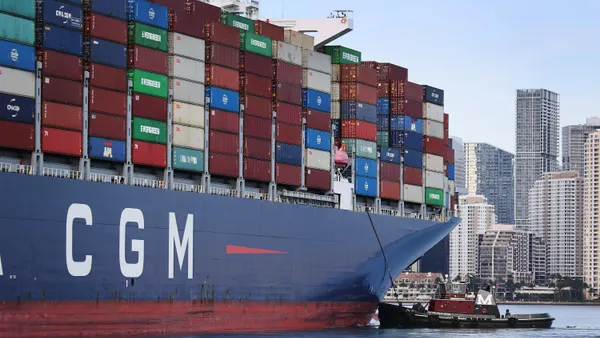Dive Brief:
- The air cargo market avoided the anticipated “peak of all peaks” in November, Xeneta Chief Airfreight Officer Niall van de Wouw said in a Dec. 5 report.
- The air cargo market benefited from a better allocation of resources, carrier-shipper agreements and overall greater demand management, van de Wouw added.
- “The supply chain pressure of a peak of all peaks would have hurt consumers and put unnecessary restraints on relationships,” said van de Wouw. “It would have been opportunistic for short-term gains.”
Dive Insight:
Ongoing strong monthly air cargo performance spurred hopes of a “peak of all peaks” during Q4 for some market sectors, said van de Wouw. But that should not be the goal, as 2023’s peak was defined by a capacity shortage and rates “going crazy” at the expense of shippers, he said.
An elevated peak season creates an imbalance between “winners and losers,” according to van de Wouw.
“2024 had all the ingredients to see crazy peak season rates but the fact we haven’t seen this situation develop is another sign of the maturity we previously referenced in the global air cargo market. What we witnessed in 2023 was a mess and a valuable lesson,” he said. “In 2024, we are seeing those lessons put into practice,” he said.
The global air cargo market reported a 13th consecutive month of double-digit growth, up 10% year over year in November, according to the report. The global dynamic load factor, which measures volume, the weight of cargo flown and available capacity, hit its highest level since April 2022.
The ongoing surge in e-commerce demand and a modest increase in available air cargo capacity led cargo spot rates to reach $2.90 per kilogram — the highest level in nearly two years, Xeneta reported.
Between the start of peak season in early September and the week ending Dec. 1, the global air cargo spot rate was up 12% YoY, compared to 25% during the same period last year. Van de Wouw attributed the lower rate growth to “carriers’ proactive capacity management.”
Source: Xeneta
Avoiding the “peak of all peaks” is the basis of greater market stability, said van de Wouw.
“In 2024, the industry has shown its maturity,” he added. “We must wait and see if this holds when the market goes down, but I don’t see that happening just yet.”














